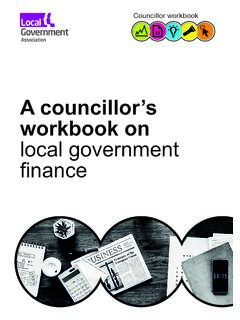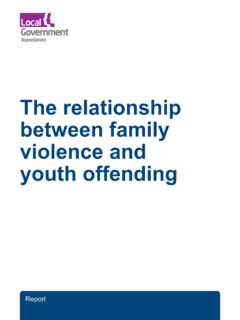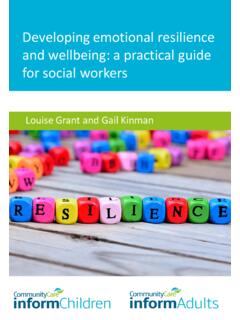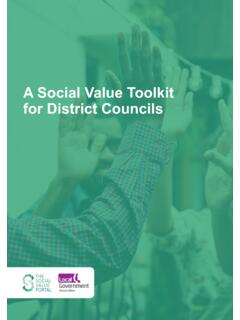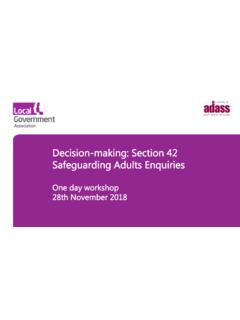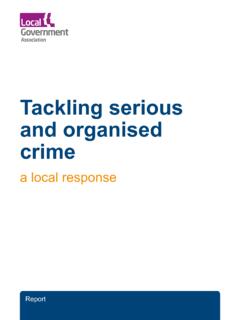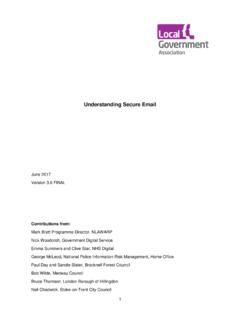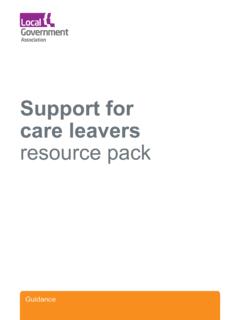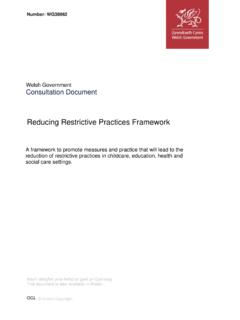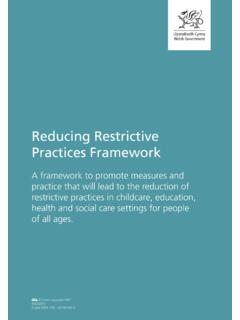Transcription of Promoting less restrictive practice
1 1 reducing restrictions tool July 2016 Promoting less restrictive practice reducing restrictions tool 1 The regulation of care and support: a Care Provider Alliance vision reducing restrictions tool this tool aims to help practitioners identify restrictions in a person s care, in order to examine whether the care is the least restrictive possible, as required by the Mental Capacity Act. It can also be used as part of care planning to promote liberty and autonomy in care plans. This tool is to assist practitioners to identify restrictions which may not always be evident and to assist them in considering less restrictive alternatives in line with principle 5 of the Mental Capacity Act 2005.
2 The question is posed in this tool Is the person as free as anyone else ? This means taking into account any legal restrictions which would apply in the specific setting, is the person as free as anyone else with or without a disability? Baroness Hale in the Supreme Court Judgement relating to deprivation of liberty P v Cheshire West and P & Q v Surrey County Council said It is axiomatic that people with disabilities, both mental and physical, have the same human rights as the rest of the human flows inexorably from the universal character of human rights, founded on the inherent dignity of human beings . This means that physical liberty is the same for everyone and is disability neutral. The question is posed in this tool Is it lawful?
3 Restrictions could be unlawful for various reasons. But, in particular, if it involves doing something which requires the person s permission, but they lack capacity to decide, then it is only lawful if it is in their best interests and (if it involves restraint) it is proportionate to the risk of harm they might otherwise suffer. Restraint means using (or threatening to use) force to do something the person is resisting, or doing anything which restricts their freedom of restrictions described mainly in Domains 7 and 8 but potentially elsewhere may involve interference with the person s Human Rights under Article 8 (rights to private and family life). If these restrictions are significant they may need to considered by The Court of Protection.
4 MCA Guiding PrinciplesThe Mental Capacity Act sets out the guiding principles which underpin all work with people from the age of 16. Principle 1: Assumption of capacity. This means that everyone from the age of 16 is assumed to have mental capacity unless it is established that they lack capacity. Principle 2: A person must not be assessed as lacking capacity unless all practicable steps have been taken to help them make the decision, without success. Principle 3: A person is not to be treated as unable to make a decision just because they make an unwise decision. Principle 4: Anything which is done on behalf of someone who lacks capacity must be done in their best interests. Principle 5: When taking action or making a decision on behalf of someone who lacks capacity thought must always be given to whether this could be achieved in a way which is less restrictive of the person s rights and freedom of action.
5 3 reducing restrictions tool Questions to askIs it lawful? If not, stop it or change it. Is it necessary? If not, stop it or change it. Is it proportionate? If not is there a less restrictive way of doing it?DomainExamples of direct restrictionsExamples of possible indirect restrictionsChanges to consider 1. Freedom of movementIs the person as free as anyone else to come and go where they like, when they like?The person is, or would be, prevented from leaving the premises (some or all of the time).The person is, or would be, prevented from entering certain parts of premises (eg kitchen, bathroom, garden) (some or all of the time).The person is not, or would not be, allowed to go to certain places without an are locked (or deliberately made difficult to open) to prevent the person leaving, or otherwise to restrict their rails or other equipment (eg tipping chairs) are used to keep the person in a particular person s shoes, other items of clothing, mobility aids or such like are, or would be removed from (or refused to) them to restrict their movements in particular occasions, the person is made to be separate from others and/or stay in a confined area (eg seclusion / time out ).
6 Sometimes the person is, or would be, taken or made to go somewhere despite their objections (eg to or from their bedroom, to the doctor).The person is relatively free to come and go but would not be able to discharge themselves or live to communal rooms and gardens is limited and controlled by staffAlthough free to come and go, the person is expected to ask permission . The person is discouraged from going out (or other people are discouraged from taking the person out) for the convenience of staff or the free to come and go, the person cannot in practice to do so without asking someone else to unlock doors availability of help from staff means the person cannot, in practice , exercise their right to come and go as they though they do not object, where and when the person goes is, in practice , decided by others.
7 Access to gardens or outdoor areas are restricted due to weather .Can changes be made to the environment which will enhance the person s freedom of movement?Could a programme be put in place which will mean at some point in the future the person will be free to come and go?Does a risk assessment simply need reviewing?Does the person need to learn a new skill as a result of which they will be able to come and go more freely?Are some restrictions on movement historic and are no longer needed? Are behavioural approaches always implemented before removing or restricting people?4 reducing restrictions tool DomainExamples of direct restrictionsExamples of possible indirect restrictionsQuestions to ask2. Eating and drinkingIs the person as free as anyone else to eat and drink as they wish?
8 Certain types of food or drink (eg alcohol, hot drinks, takeaways), would be removed from the person if they bought them, or were given them by someone types of food or drink are not, or would not be, provided to the person on request (even though they could, in practice be provided and they could afford them).The person is, or would be, prevented from preparing their own food, or from doing so unsupervised (either generally, or at particular times).The person is, or would be, prevented from eating and/or drinking at certain times or in certain places, or from doing so person is, or would be, prevented from smoking when other people would be allowed to person is not being allowed to eat according to their cultural or religious beliefsThe person could select and/or prepare food and drink for themselves, but in practice is discouraged from doing so for the convenience of staff or the availability of help from staff means the person cannot, in practice , exercise their right to eat and drink as they times and/or menus are more restricted than they need be, for the convenience of staff or the though they do not object.
9 What and when the person eats and drinks is, in practice , decided by others. It is difficult in practice for the person to eat according to their religious beliefs. Can the person be taught skills to help them increase independence with cooking?Could a trial be put in place to provide food in a different way?If the person is unable to prepare a full meal can they contribute to elements of meal preparation?Can the person be involved in deciding what food choices are on offer?Could you get advice from someone else to assist with cultural or religious food issues?5 reducing restrictions tool DomainExamples of direct restrictionsExamples of possible indirect restrictionsQuestions to ask3. Washing and toiletingIs the person as free as anyone else to use the bathroom as and when they wish?
10 The person is, or would be, prevented from using the toilet unsupervised (some or all of the time).The person is, or would be, prevented from washing, bathing, showering and/or shaving unsupervised (some or all of the time).The person is, or would be, prevented from using the toilet/bathroom/shower room at certain toilet/bathroom/shower room is, or would be, locked to prevent the person using it without supervision/permission (some or all of the time).At times, the person is, or would be, washed, bathed and/or shaved despite their person is kept in incontinence pads for the convenience of staff (even though continent).There is a delay for incontinence pads to be changed which relates to staff levels and person could use the toilet and/or wash and bathe themselves, but in practice is discouraged from doing so, for the convenience of staff or the facilities necessary for the person to use the toilet and/or wash and bathe themselves are not availability of help from staff means the person cannot, in practice , use the toilet and/or wash or bathe as they though they do not object, when and how the person is washed or bathed is, in practice , decided by others.
